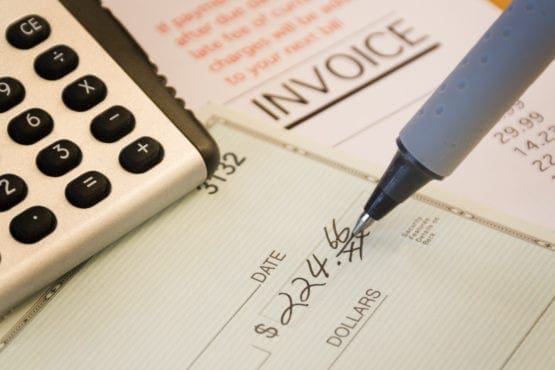Check, check, and check again. Think about how you evaluate your financial budget for the month. How much money did you spend? Did it all add up? What exactly did you buy, and how much did you make?
Spreadsheets and budget apps may help, but it’s easy to miss the outstanding auto-drafted bill or upcoming payments. If you’re not careful, the business could be shortchanged. Your company must go through the same process, otherwise known as accounts payable reconciliation.
In layman’s terms, accounts payable reconciliation is the recurring checks and balances of your company’s finances. Each month, before month-end, it’s a good measure to double check all of the paid and unpaid invoices and their verified payments based on how your company’s financial procedures are set up.
Every business reconciles accounts differently based on expenses and expectations. Regardless of the method, paper processes are a problem. There’s the risk of manual miscalculations and lost files, not to mention the stresses of data security.
Automating accounts payable eases the process with improved organization, approval time, and process efficiency. There are fewer piles of paper to process, on-the-go approvals, and fewer headaches from manual mistakes.
AP automation software and services provide full visibility into your company’s finances by monitoring and managing payables without paper. AP automation creates the perfect trail for auditing, tax preparation, and month-end closings without headaches and wasted hours with piles of paper.
We asked the accounts payable experts below a few questions about their company’s accounts payable reconciliation process since integrating AvidXchange.
- Accounts Payable Specialist – Brittany Riolo
- Director of Retail Accounting – Pamela Scruggs
- Newland Accounts Payable Lead – Valerie Vance
- Corporate Support Manager – Heather
Q: Before you started using AvidXchange, describe your reconciliation process.
- Brittany: Before AvidXchange, our whole process was very manual. We are a company that takes baby steps when advancing procedures. We used to have a physical check signer in the office at all times, which is impossible when you only have three approved signers, and they are all individuals who travel frequently. This is especially difficult when we are trying to close the month/year and they are out of town for meetings or inventory.
- Pamela: The reconciliation process was tedious before Avid. We cut many checks, and often vendors hold on to them so outstanding checks are carried over month-to-month. Keeping track of these month to month created a great deal of work.
- Valerie: Before AvidXchange, the process of reconciliation was time-consuming. We were constantly going to the files or retrieving items from storage. It was costly at times. Also, the process of scanning the items and saving them somewhere.
- Heather: Prior to electronic invoicing, we were dragging out boxes of paper or crowding at the file cabinet area to find every important piece of paper for auditors, CPAs, etc. It took a lot of time and effort to collect all the documentation needed for year end! And if something wasn’t filed correctly, it was a big problem.
Q: Since using AvidXchange, what does your reconciliation process look like now?
- Brittany: It has advanced our check process dramatically! Now when our approvers are out of the office, they are still able to sign on to our network and approve payments since they no longer need to physically sign the check. This makes it easier for reconciliation because now we don’t have a mess of payments in the way of getting everything else squared away.
- Pamela: The peace of mind that each AvidXchange payment has cleared streamlines the process tremendously! Bank Rec’s have become a breeze as there are no pending items to follow up on each month. I do 30 plus reconciliations a month and using AvidXchange has cut down the time spent on them by almost half.
- Valerie: With AvidXchange everything is right there. No need to go to the files, no need to retrieve items from storage, no need scanning items and saving them somewhere, hoping that the issue resolves itself, so you don’t have to hold on to the box or files. It is simple; anyone who uses AvidXchange can get the answers right there.
- Heather: Now we click a few buttons and out pops a report of any information we might ever need. Since AvidXchange’s invoice automation solution and Payables Lockbox both integrate with our accounting systems, we are able to have nearly all info already synced into each system, and anything else can easily be found by going to AvidXchange or Payables Lockbox and doing a quick search. The reports from AvidXchange make things very easy.
Q: What are your reconciliation best practices?
Brittany: Keeping organized. Not leaving heaps and piles of paperwork all over the office and making sure that we stay on top of tasks throughout the month/year. There is nothing worse than leaving things to wait until the last minute.
Pamela: Go slowly and make sure you pay attention to all of the details. I check each item off on the statement as I go through it so that if there is a discrepancy, I can easily see where to start looking. Make sure to look for monthly fees and or interest and book those prior to starting your reconciliation as well.
Valerie: The best practices for reconciliations is staying on top of them. Don’t let them pile up. You don’t have to dread reconciling with AvidXchange. The company makes it easy and convenient.
Heather: More frequent reconciliations actually with our HOA accounting system, Cinc, combined with AvidXchange’s payment automation solution, we are able to auto-reconcile (it’s great). We have to confirm coding and post months are correct, and that any aging items are dealt with promptly. Speaking of aging items, this has become much less of a problem since AvidXchange’s payment automation solution!



